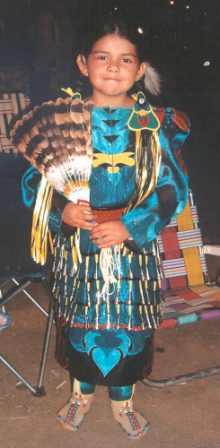Native American Dance
Native American dance is a very special art. Many dances are performed for family events, such as weddings, birthdays, story telling and entertainment. Some dances are performed for fun, others to help the harvest, and some for religious ceremonies. The Native American culture is a living culture. Our people as well as the dances are constantly changing and evolving. These dances have strong roots in history as well as signs of modern influence. Here are some examples of the dances in various regions of North America.
Northern Traditional Dance
The air erupts with the sound of the drum as the dancer goes low to the earth as if looking for the tracks of a not so distant enemy. As the song increases in tempo, the story begins to take place. This dance is said to be one of the oldest styles of dance to have originated from the northern plains. The dance was said to be a story dance, which was used after a battle or hunt to depict and share the experience of the day's events to all of the people in the encampment. The regalia are more traditional in nature including such items as the bone breastplate, coupe stick, shield and a single bustle.
|
|
Traditional Dancer |
My Dad |
Grass Dance
Follow the rhythmic flow of the dancer gracefully moving across the stage as the ribbons and yarn adorning the regalia seemingly flow like the long prairie grasses. Originating from the northern plains, by the Omaha Nation, the grass dance has a long colorful history. Before any dances or ceremonies could take place, they would send out a select society of men known as the grass dance society. These men would have the responsibility of finding and preparing the dance arena. Once the area was selected they would flatten down the grass, fill in the holes and also bless the arena. It was said that after the dances were complete, the grass would rise back up as if no one had ever been there. The dancers would weave the sweet grasses and prairie grasses into their outfits. Throughout the years, the dancers began to weave the brighter ribbons and yarn into their regalia to replace the sweet grass.
Fancy Dance
Fasten your seatbelts and prepare yourself for the men's fancy dance. Sit back and enjoy a kaleidoscope of color and movement as the dancer skillfully captures the attention of the audience. One of the fastest and most colorful styles of dance, the fancy dance is a true statement of speed, endurance, and personal expression. Originally referred to as the crazy dance, the dance incorporates brighter outfits and faster movements.
Women's Jingle Dress Dance
Listen to the enchanting sounds of the metallic cones on this special dress as they come together, making a sound compared to the gentle sounds of rain. With its beginnings as a healing dance of the Ojibway Nation, this dance is performed in a non-ceremonial style. The cones upon the dress represent various prayers.
|
|
Jingle Dress Dancer |
My Daughter |
Women's Fancy Shawl Dance
Envision the grace and beauty of a butterfly gracefully floating through the sky and you will know how this dance got it name. Nicknamed the butterfly dance, this style represents the beauty and grace of new life. The dance is very upbeat, yet the dancer never seems to touch the ground.
Home Fort Belknap
Last update 3/16/06 by Lacey Plumage





